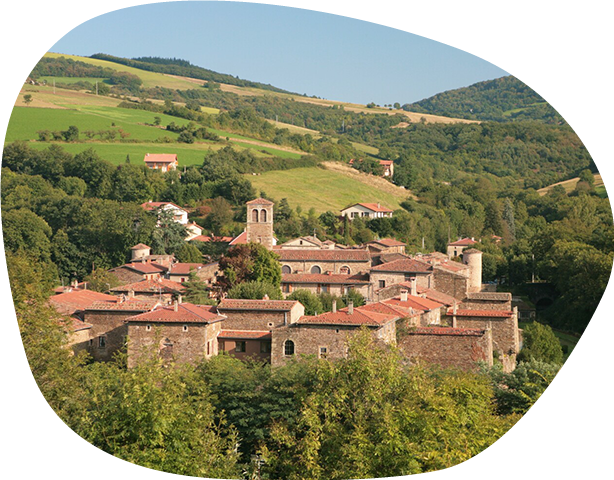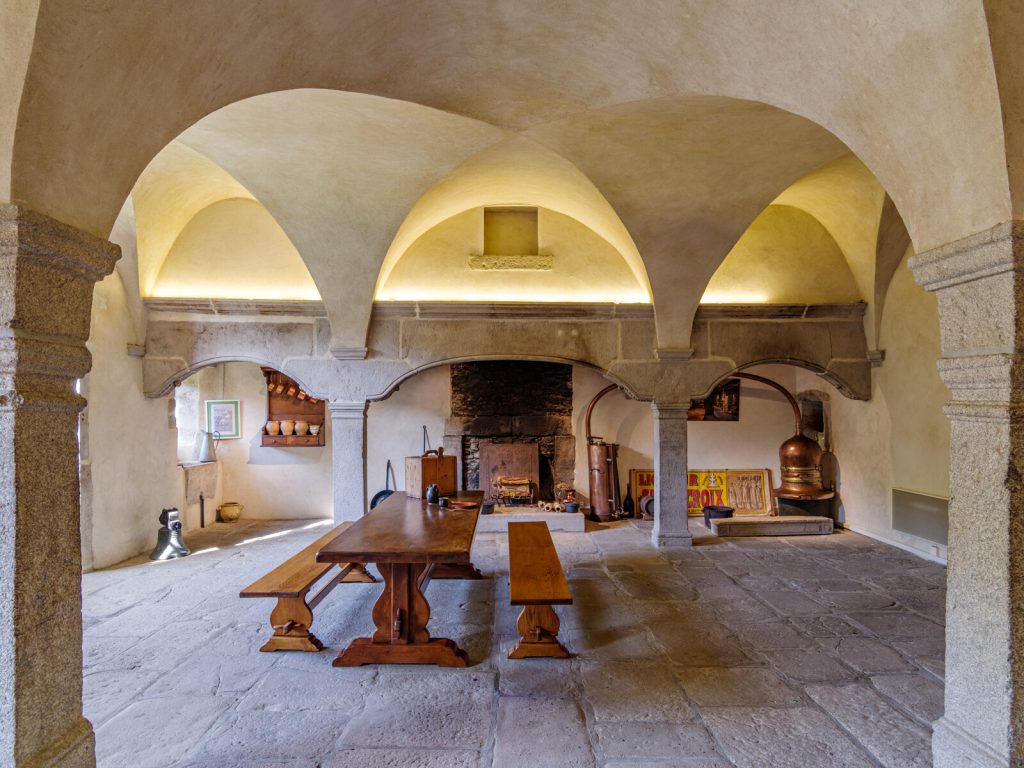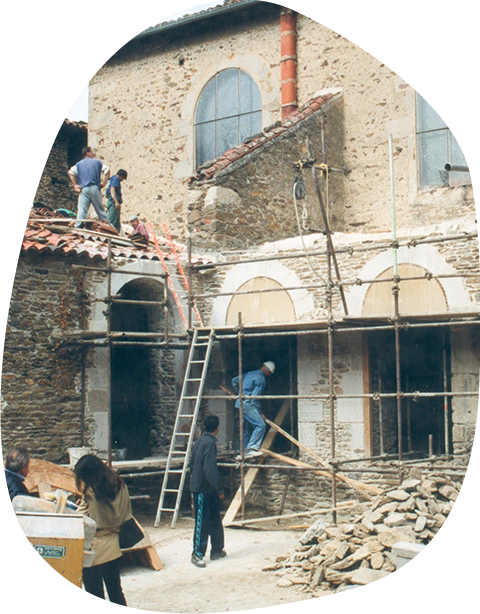Development
The Chartreuse in Sainte-Croix-en-Jarez is a unique site: a Carthusian monastery for more than five hundred years, which became a village after the French Revolution. This shift led to architectural modifications, while overall allowing all the buildings to be preserved, which is exceptional.
A conservation area
Now forming the village centre of Sainte-Croix-en-Jarez, the former monastery is protected as a Historical Monument. The entire Site with its surroundings has been listed as a remarkable heritage site since 2016.
The State, the Region, the Department, Saint-Étienne Métropole, the municipality of Sainte-Croix-en-Jarez, the Safeguarding Association, and Le Pilat Regional Nature Park all participate in the maintenance and restoration of this exceptional site, dating back to the thirteenth century for its oldest parts.


The Safeguarding Association
The inhabitants of the Chartreuse are also its first defenders and guarantors. In 1977, they created the Association for the Safeguarding and Development of the Old Charterhouse. In 1981, they acquired the former kitchen and the former dormitory of the monastery, which were then restored thanks to the funds raised in the first guided tours, concerts, and shows.
Although the Tourist Office of Saint-Étienne Métropole is now responsible for most visits to the Chartreuse, the Association still organises events throughout the year: a classical music festival entitled Les Musicales, some exhibitions, and cultural activities such as La Balade au fil des arts.
The association is also involved in projects to safeguard and enhance the Site.
Heritage preservation
Since the 1970s, several restoration campaigns have been carried out in order to restore the Chartreuse Site to its former glory.
- Facade, between 1976 and 1980: the coating was removed and the stones repointed.
- Cour des Frères, 1974: a first stone path was laid. Between 1999 and 2008, it was replaced by the current coating. Archaeological excavations were also carried out.
- Bâtiment des Hôtes, between 1982 and 1997: restoration of the facade and interior, which includes the kitchen and a monumental staircase leading to the Beatrix de Roussillon room, now used for seminars and exhibitions.
- Cloister, between 1990 and 2007: restoration of the galleries, along with two excavation campaigns.
- Paintings of the mediaeval church: discovered in 1896 and classified as Historical Monuments six years later, they were cleaned and protected by ARCOA (Art object restoration and conservation workshop) in 1986. Studied and maintained in 2015, they remain fragile. Further work is planned soon to ensure their conservation.
- Parish church, early 1980s: restoration of the stalls and woodwork of the choir, which take on their current colours.
- Hermitage, 1989: acquisition by Le Pilat Regional Nature Park. It has undergone several stages of restorations, including the reconstruction of the covered walk. The last campaign dates from 2021, with the restoration of the 17th century painted coatings.

In their efforts to safeguard this exceptional heritage, local actors receive support from the DRAC (Regional Directorate of Cultural Affairs), the Auvergne-Rhône-Alpes Region, and the Heritage Foundation, which is supplemented in particular by the Loto du Patrimoine (Heritage lottery) fund from the Stéphane Bern Mission in 2020.
